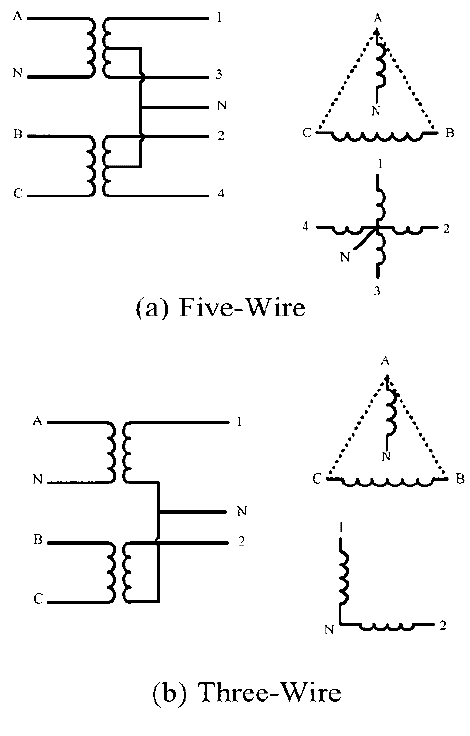- This topic has 1 reply, 1 voice, and was last updated 2 years, 11 months ago by .
-
Topic
-
How does this kind of transformer works, where these are used? Why does the Y phase current is almost double than the other phases? …
How does this kind of transformer works, where these are used? Why does the Y phase current is almost double than the other phases?
How this kind of transformer is constructed, its connection diagram? Can anyone furnish some light on it?
Viewing 1 replies (of 1 total)
Viewing 1 replies (of 1 total)
- You must be logged in to reply to this topic.

 The main advantage of the T connection is that it uses transformers with standard primary and secondary voltages. The disadvantage of the T connection is that a balanced two-phase load still produces unbalanced three-phase currents; i.e., the phase currents in the three phase system do not have equal magnitudes, their phase angles are not 120 apart, and there is a considerable amount of neutral current that must be returned to the source. In order to overcome the disadvantage of the T connection, the Scott connection uses two single-phase transformers of a special design to transform three-phase voltages and currents into two-phase voltages and currents. The first transformer, called the
The main advantage of the T connection is that it uses transformers with standard primary and secondary voltages. The disadvantage of the T connection is that a balanced two-phase load still produces unbalanced three-phase currents; i.e., the phase currents in the three phase system do not have equal magnitudes, their phase angles are not 120 apart, and there is a considerable amount of neutral current that must be returned to the source. In order to overcome the disadvantage of the T connection, the Scott connection uses two single-phase transformers of a special design to transform three-phase voltages and currents into two-phase voltages and currents. The first transformer, called the